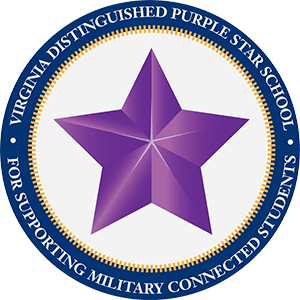The Second Grade Curriculum challenges students to grow in the areas of Religion, Math, Language Arts, Social Studies, and Science. Language Arts includes reading comprehension, grammar, phonics, spelling, creative writing, and handwriting. Use of iPad technology is integrated throughout the curriculum. Specials in second grade include Spanish, music, art, computer, library, physical education, Violin Buddies and “Genius Hour” Electives. The textbooks and basic skills are as follows:
Religion
Textbook: We Believe (Sadlier)
Second grade students prepare for the Sacraments of Reconciliation and Holy Eucharist. Opportunities to participate in the Eucharistic Celebrations:
- Weekly and monthly Mass celebrations with entire student body
- Mass on Holy Days of Obligation when we are in school
- Prayer Services
Parents are always welcome to attend these celebrations.
Curriculum Overview:
- Catholic beliefs and values
- The Mass
- The Sacraments Daily Prayer
- The Rosary
- The Stations of the Cross
- The Bible
- The Holy Trinity
- The Ten Commandments
Jesus Is With Us Always:
- Jesus is the Son of God
- Jesus Christ Gives Us the Church
- We Celebrate God’s Love
- We Celebrate Baptism
- We Celebrate Confirmation
- The Church Year
- Ordinary Time
Jesus Calls Us to Penance and Reconciliation:
- We Learn About God’s Love
- God Gives Us Laws
- We Follow God’s Laws
- We Prepare for the Sacrament of Forgiveness
- We Celebrate the Sacrament of Forgiveness
- Advent
- Christmas
Jesus Gives Himself in the Eucharist:
- Jesus Gives Us the Eucharist
- We Gather for the Celebration of the Eucharist
- We Celebrate the Liturgy of the Word
- We Celebrate the Liturgy of the Eucharist
- We Go in Peace to Share God’s Love
- Lent
- The Three Days
We Live Our Catholic Faith:
- God Calls Us to Love and Serve
- The Church Lives Today
- We Pray
- We Honor Mary and the Saints
- We Show Love and Respect
- Easter
- Sharing Faith in Class and at Home
Math
Textbook: Progress In Mathematics (Sadlier-Oxford), Progress In Mathematics Workbook (Sadlier-Oxford)
Second grade students are introduced to a mathematical program that offers:
- Activities designed to meet the individual needs of all learners through differentiated instruction, strategic intervention, concrete presentation, diagnostic re-teaching, and learning modalities (visual, auditory, kinesthetic, and tactile learners).
- Step-by-step instruction that leads to conceptual understanding
- Frequent, sequenced practice that develops fluency with skills
- Support for the development of higher-order thinking skills
- Strong development of problem-solving competence
- In-depth questioning that fosters strategic thinking
- Use of manipulatives for extensive practice to gain proficiency with each mathematical skill
- SMART Board technology activities extend lessons and chapter content
- IHM maintenance sheets for practice and review
General Overview:
- Addition and Subtraction Facts
- Place Value to 100
- Place Value to 1000
- Data and Graphs: Using Operations
- Addition: Two-Digit Numbers
- Subtraction: Two-Digit Numbers
- Geometry
- Money and Time
- Addition and Subtraction: Three-Digit Numbers
- Fractions and Probability
- Measurement
- Multiplication and Division
Language Arts
Textbook: Scott Foresman Reading Street: Basal Reader, Grammar Workbook, Phonics Workbook, and Spelling Workbook
- Priority Skills: Comprehension, Phonemic Awareness, Phonics, Fluency, Vocabulary, Grammar, Spelling, and Writing
- Leveled text for small group differentiated instruction as well as an Online Leveled Reader Database for students to access from home
- Basal Reader – 50% Fiction – 50% Nonfiction – The literature is organized around unit themes.
- Every selection emphasizes a science or social studies concept.
- Reading Street provides a daily plan for whole group instruction and for meeting with small groups to differentiate instruction.
- Literacy Centers
- Reader’s Theater
- SMART Board technology activities extend lessons and chapter content
- Quia Games and Quizzes used to enhance and extend student learning
- Development of research and study skills
- Weekly and Unit Assessments
- Grammar Maintenance for practice and review of skills
- Handwriting: Writing Our Catholic Faith – Students in second grade review manuscript before learning to write in cursive.
Writing: Creative writing is taught as a process that involves five basic steps: planning, writing, revising, editing, and publishing. Weekly writing assignment topics are determined by the theme for each unit of study and a specific writing trait. At the end of each unit, there is a writer’s workshop that focuses on developing an understanding of one of the following: narrative, expository, descriptive, or persuasive writing.
Science
Textbook: Science Macmillan/McGraw-Hill
- Plants and Animals
- Homes for Plants and Animals
- Changes on Earth
- The Sun and Its Family
- Matter and Energy
- Watch It Move
- STEM Challenges
Social Studies
Textbook: Communities and Their Needs Silver, Burdett & Ginn
- American History
- China
- Egypt
- Native Americans
- Rural, Suburban, and Urban Communities
- Maps: title, legend, compass rose
- Location of continents, oceans, and rivers
- Famous Americans and Symbols
- Civics and Economics
Technology
Technology integration provides a variety of tools that enhance the learning process at Star of the Sea. Students learn problem-solving skills while working in collaborative teams and on individual research projects. Projects include (but are not limited to) the creation of a habitat newsletter, Native American Voice Thread and PowerPoint presentations, Solar System Vokis, National Monument Brochures, Blogging, Wikis, Kidspiration and more. The use of technology supports our curricular goals of creating twenty-first century learners.

